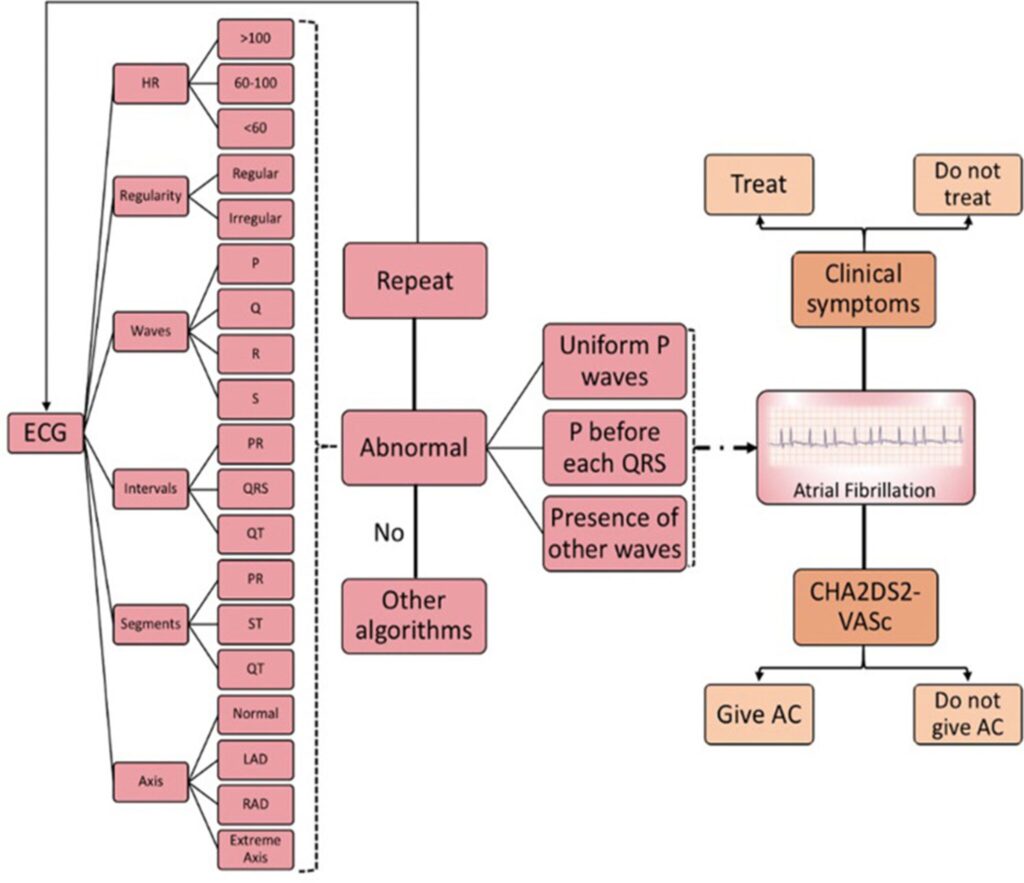The field of cardiology is constantly evolving. Its advancement is largely because of medical devices and the everchanging and steadily accelerating technologies. In 2023, we expect to see major breakthroughs in areas such as wearable devices, artificial intelligence (AI), 3D printing and robotics. These innovations hold the potential to improve patient outcomes significantly and enhance the overall quality of care in cardiology.
Wearable devices will keep patients in check at all times
One rapidly growing trend in cardiology is wearable devices. Designed to monitor a patient’s heart rate, blood pressure and other vital signs in real time, wearables are becoming increasingly sophisticated. Newer models have advanced sensors that can detect irregular heart rhythms, such as atrial fibrillation. [1]
2023 is expected to launch enhanced prediction of cardiovascular events before they occur, thus revolutionising the way we diagnose and manage heart conditions. An example of such a device is the Cardiogram app [2], which uses machine learning (ML) to detect atrial fibrillation in users with high accuracy. The app is compatible with several wearable devices, including the Apple Watch and Fitbit. Another device is KardiaMobile 6L [3]—a handheld ECG monitor which can detect six different heart rhythms and instantly provide results.
Artificial Intelligence (AI) will improve diagnostic accuracy
AI holds great potential in transforming cardiology by improving diagnostic accuracy through predicting outcomes and personalised treatment plans. This year’s great expectations are to see more widespread utilisation of AI in cardiology, with algorithms that can analyse vast amounts of patient data to detect patterns and make accurate predictions.
One example of AI in practice is the EchoGo Core AI tool [4] which uses AI to analyse echocardiogram images and provide a diagnosis in a matter of seconds. The tool has been shown to have high levels of accuracy and holds the potential to help clinicians make faster and more informed decisions. [5]
Another example is the use of AI to predict cardiovascular events such as heart attacks by analysing factors such as age, gender, and medical history. This type of technology promises to save lives by identifying patients at high risk of developing serious cardiac events.
AI may cover at least 5 domains of cardiology, including electrophysiology, imaging, heart failure, and preventative and interventional cardiology. Atrial fibrillation (AF) is an example that can be diagnosed with an ECG, where AI/ML could support the process.
ECGs are broken down to:
- heart rate
- regularity
- waves (P-QRS-T)
- intervals
- segments
- axis.
The image below shows an exemplary AI algorithm that can detect AF. Importantly, AI not only uses the classical ECG findings to diagnose AF but can also achieve that with subtle ECG changes that often go unnoticed by physicians.

Source: National Library of Medicine of the United States
3D Printing will empower clinicians to design and create highly personalised medical devices
3D printing is another trend to transform the cardiology domain in the upcoming months. To put things into perspective, the global 3D-printed medical device market grew from $2.87 billion in 2022 to $3.57 billion in 2023 at a compound annual growth rate (CAGR) of 24.5%. [7]
This technology allows clinicians to create highly personalised medical devices and implants. In cardiology, 3D printing is being used to create patient-specific models of the heart, allowing for better planning of complex surgical procedures. For example, surgeons may use 3D-printed models to practise repair of congenital heart defects or educate patients and their families about heart conditions, helping them better understand the surgical procedure and what to expect.
Robotics will enhance precision during surgical procedures
The robotics trend is too on the rise. In 2023, we can expect to see a widespread use of robotic-assisted procedures, such as robotic heart surgery. During these procedures, surgeons are eased using robotic arms with precise movements, reducing the risk of complications and improving the surgical outcomes.
An excellent example is the da Vinci Surgical System, used to perform minimally invasive cardiac surgery. The system allows surgeons to perform complex procedures through small incisions, minimising the risk of complications and shortening the recovery time. [8] However, according to Intuitive Surgical, da Vinci robot sales slowed in Q4 2022 even though it expects surgical procedure volumes to increase by 12% to 16% in 2023. [9]
Another recent technology example is the Siemens’ CorPath GRX robotic-assisted PCI system [10], allowing interventional cardiologists to perform with greater precision and accuracy.
To conclude, the cardiology field is rapidly advancing with the help of medical devices and technologies. The latest cardiology trends are improving patient outcomes, reducing costs and increasing efficiency in the delivery of care. As technology continues to advance, the possibilities for the future of cardiology are endless.
With continued research and development, medical devices and technologies will continue to play a critical role in the prevention, diagnosis and treatment of heart disease – ultimately, leading to better outcomes and a brighter future for patients and healthcare professionals alike.
Sources
- Guillermo Prieto-Avalos, Nancy Aracely Cruz-Ramos, Giner Alor-Hernández, José Luis Sánchez-Cervantes, Lisbeth Rodríguez-Mazahua, Luis Rolando Guarneros-Nolasco, Wearable Devices for Physical Monitoring of Heart: A Review (NIH, 02/05/2022)
- Pallavi, Cardiogram: Your Personal Health Monitor (MobileAppDaily, 20/09/2022)
- KardiaMobile® 6L (Kardia.com)
- Kendra Hall Ph.D. RT(R), Ultromics Receives FDA Clearance for Its Breakthrough Device (Ultromics, 06/12/2022)
- Ultromics, How artificial intelligence is revolutionizing echocardiography (Ultromics, 06/01/2022)
- Mohamad S Alabdaljabar, Babar Hasan, Peter A Noseworthy, Joseph F Maalouf, Naser M Ammash, Shahrukh K Hashmi,Machine Learning in Cardiology: A Potential Real-World Solution in Low- and Middle-Income Countries (NIH, 28/01/2023)
- 3D Printed Medical Devices Global Market Report 2023 (The Business Research Company, 01/2023)
- Shehmir Javaid, The Many Benefits of the da Vinci® Surgical System (cmirs.com)
- Elise Reuter, Intuitive forecasts 12%-16% growth in procedures in 2023 even as da Vinci robot sales slowed in Q4 (MedTechDive, 11/01/2023)
- CorPath® GRX for Use During Percutaneous Coronary Interventions (Siemens Healthineers)
- CorPath GRX Robotic Percutaneous Coronary Intervention (PCI) (Mount Elizabeth)



